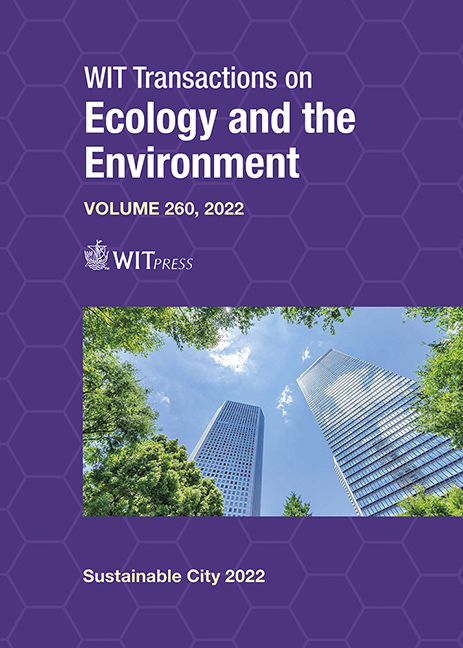ENVIRONMENTALLY RESPONSIVE DESIGN IN BRITISH COLONIAL ARCHITECTURE WITHIN THE MEDITERRANEAN BASIN: THE CASE OF THE PRESIDENTIAL PALACE OF CYPRUS
Price
Free (open access)
Transaction
Volume
260
Pages
14
Page Range
451 - 464
Published
2022
Paper DOI
10.2495/SC220371
Copyright
Author(s)
EIRINI KYRITSI, ANDREAS KYRIAKIDES, AIMILIOS MICHAEL, MARIA PHILOKYPROU, ANDREAS SAVVIDES, APOSTOLOS MICHOPOULOS
Abstract
The conservation of historical buildings is a highly sustainable practice. Among others this is a process of reuse and preserving cultural values and past knowledge, and understanding the evolution of history and architecture. Another sustainable aspect of historical buildings is the adaptability to local climatic and geomorphological conditions through the incorporation of various environmentally responsive design features. To achieve the sustainable conservation of historical buildings the environmental design elements need to be identified, preserved and even reinforced. This paper presents an in-depth investigation of an iconic historical building – the Presidential Palace of the Republic of Cyprus – which was constructed as the government house when Cyprus was a British colony. Incorporating local construction techniques, materials and forms alongside British architectural elements, the building under study is representative of British colonial architecture on the island. The aim of the investigation was to identify the architectural and bioclimatic elements of the building that should be preserved, restored and reinforced. Additionally, other similar local colonial buildings are presented and compared alongside the Presidential Palace, to identify typical architectural and bioclimatic elements in the colonial architecture of the island. These elements include the configuration of semi-open and open spaces, as well as construction techniques, materials, layout arrangements and building shell opening characteristics. The research incorporates findings from existing literature, as well as media, photography and governmental archives. The findings of this research may be applicable in other areas of common climatic conditions, where similar typological and constructional characteristics are to be found. These findings can assist the conservation and energy retrofit actions of historical buildings.
Keywords
environmentally responsive design, environmental conservation, historical buildings, bioclimatic elements, Eastern Mediterranean, sustainability, colonial architecture





